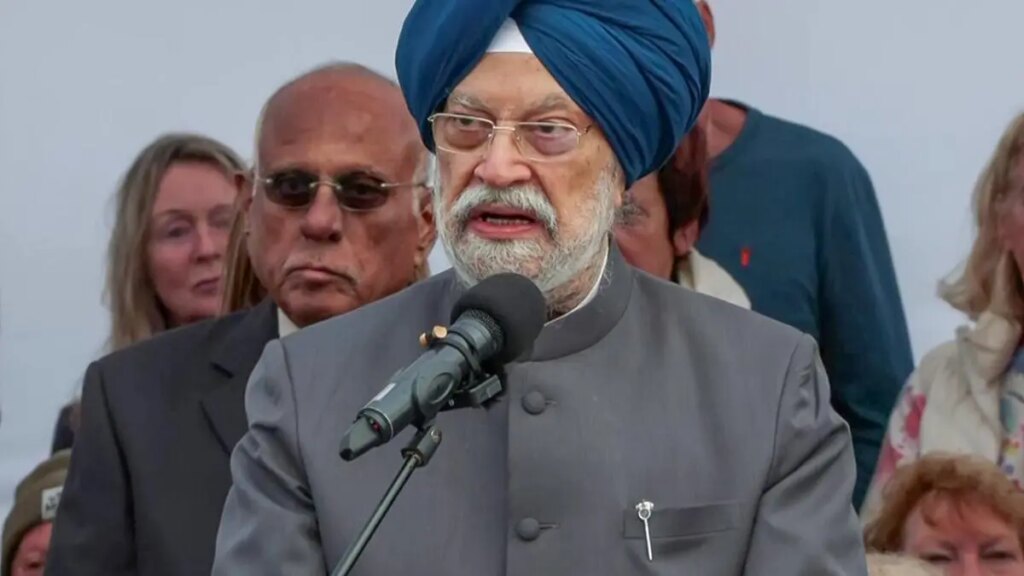
Union Minister of Petroleum and Natural Gas Hardeep Singh Puri (file photo)
| Photo Credit:
ANI
India, which has offered 2.5 lakh sq km area for exploration under OALP Round-10, is close to discovering a Guyana-scale oil field in the Andaman sea, Minister of Petroleum & Natural Gas Hardeep Singh Puri said.
In his address at the 9th OPEC International Seminar in Vienna, Austria on Wednesday, the Minister emphasised that the world’s third largest crude oil importer is aggressively expanding its efforts in the domestic exploration and production (E&P) sector.
“With 2.5 lakh sq km open for exploration under OALP Round-10, and being close to discovering a Guyana-scale oilfield in the Andaman Sea, India is in the midst of one of the most ambitious plans to enhance the efforts to drill for more and further enhance hydrocarbons exploration in the country,” he added.
India’s target is to increase the country’s exploration acreage to 0.5 million sq km by 2025 and 1.0 million sq km by 2030, the Minister said.
This vision is supported by key policy reforms, including shifting from a Production Sharing Contract (PSC) regime to a Revenue Sharing Model under HELP, and amendments to the ORD Act 1948 to improve lease management, safety and dispute resolution, while integrating renewable energy into hydrocarbon projects, Puri noted.
Additionally, reducing ‘No-Go’ areas by 99 per cent has freed over 1 million sq km for exploration, strengthened by national data acquisition initiatives such as the National Seismic Program, Andaman Offshore Project, Mission Anveshan and the Extended Continental Shelf Survey.
As the world’s third-largest energy consumer with demand of around 5.4 million barrels per day, Puri described India as both a structural growth engine and a long-term stabiliser of global oil markets.
“India will contribute nearly 25 per cent of the incremental global energy demand growth in the coming years,” he added.
Speaking on India’s comprehensive approach to navigating the volatile global energy landscape, the Minister emphasised that diversification of crude import sources from 27 to 40 countries, enhancing domestic production, developing alternative fuels, transitioning towards a gas-based economy, and aiming to become a global refining hub has helped the country navigate crisis.
India aims to increase its refining capacity to 310 million tonnes per annum (mtpa) by 2028 and expanding petrochemical capacity to become a $300 billion industry by 2030.
Published on July 10, 2025

